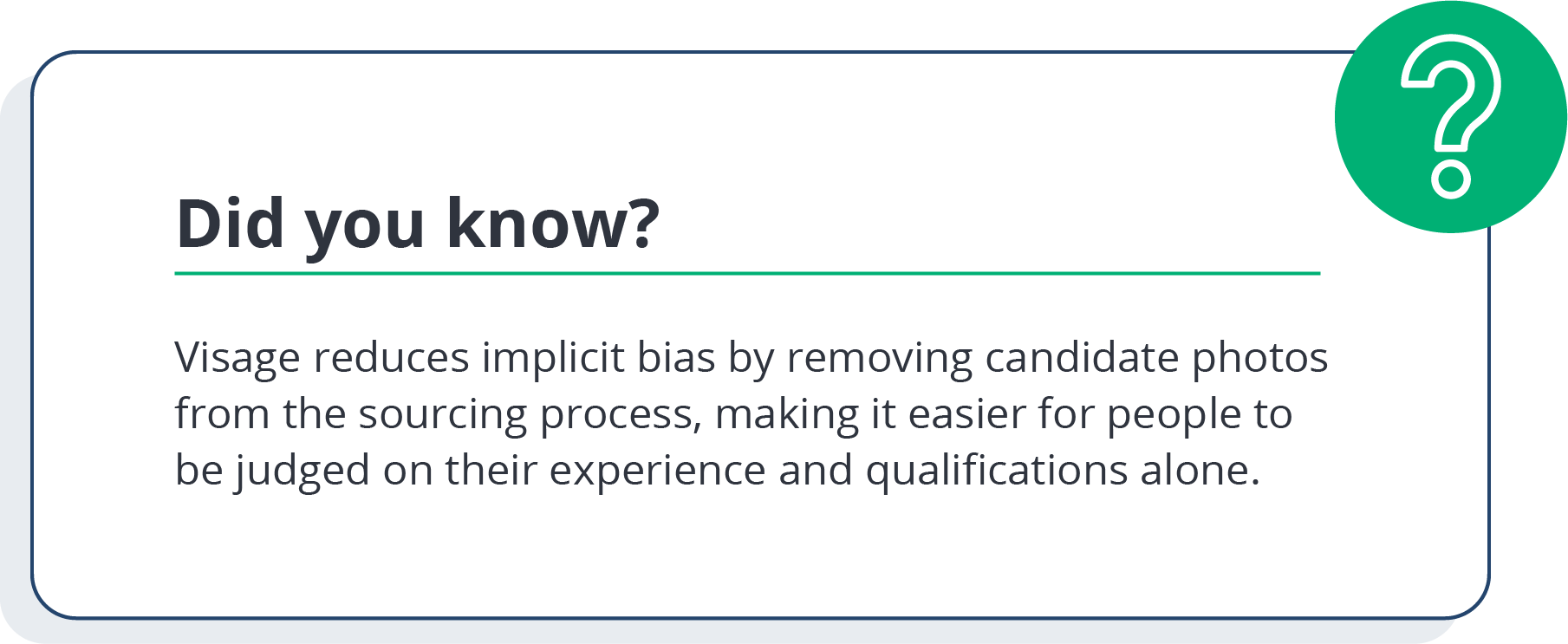Your talent sourcing strategies for 2024 and beyond should be built around resilience and adaptability, not because you can see the future, but because you can’t. Trends, data, and informed opinions provide helpful pointers, but what works for other recruiters won’t necessarily work for you – especially in a recruiting landscape that’s not short on uncertainty.
There will always be recruiting challenges to face: talent shortages, economic changes, consequences of AI that we haven’t yet imagined, and much more. But a clever combination of disparate talent-sourcing strategies that blend the people, practices, proactivity, and psychology will give you the results you’re looking for, no matter what the world throws at you.
6 Talent Sourcing Strategies That Work
1. Build A Brand Worth Looking At
Power up your sourcing success by creating a brand that’s a magnet for the talent you want to attract, now and in the future. Good branding is foundational for successful passive sourcing, which is often a safety net during uncertain times. An attractive brand nurtures those people, especially Gen Z, who may not have considered you before.
But brand creation isn’t about smoke and mirrors. It has to be authentic. A sharp candidate will sniff out inauthenticity and write you off, leaving your reputation diminished. Cultural fit is important, as is consistent brand messaging at every touchpoint of the candidate experience.
If you haven’t already, a few branding updates to consider include sharing your position on work-life balance, psychological safety, and how employee contributions reflect within your company, its products, and growth opportunities.
If you need help with developing this keep reading below!
2. Revamp Your Candidate Experience
Humanity lies at the heart of the recruiting process, and sometimes the stress of our roles, mixed with all the AI buzz in the market, can make us forget the human at the other end of it. AI can certainly help, but it has to be authentic.
A well-thought-out brand will attract your top talent, but an awesome candidate experience will keep your brand’s promises.
To review the candidate’s experience, a few questions can help you get started:
- What’s your candidate’s journey?
- Do you really get to know each candidate?
- Do they feel processed or ghosted, instead of respected and important?
Get feedback from those you hire – and from those you don’t. Happy non-hires are some of your best brand ambassadors.
Don’t forget to ask your hiring managers! Be sure to poll the hiring mangers with the most hires or who have been with your company for multiple years. Ask them what they think could be improved. Make sure they tell you what they need from you to make things better for the candidate. What would make the difference? Less busy work to free up more time for one-to-one candidate nurturing? Start making a list.
3. Build A Robust Talent Pipeline
A robust talent pipeline builds resilience and adaptability into your business.
Even if you’re not hiring right now, your recruitment budget is uncertain, or you’re in the depths of the hiring down cycle, plan to spend some time building your pipeline long before you need it. Develop relationships, lean in to employee referrals, reach out to people, get them interested, and keep them interested.
Basically, you need to dig the proverbial well before your company’s parched for talent.
Your new supercharged branding will do some of the work for you, as will well-designed tech that removes the repetitive work so you can focus on the human side. It’ll also give you the data you need to make sure you’re filling up that talent pipeline with the potential you want.
Don’t forget to scan the industry horizon, frequently checking for jobs beyond the specs you’re currently working on, and looking for gaps in succession planning.
4. Scratch Your Own Itch: Your Special Project
The only talent-sourcing strategies that work are the ones that work for you. It’s time to go freestyle and focus on what, if you fixed it, would make all the difference. What’s your own sticking point?
Perhaps it’s recruiting for hard-to-fill roles. Or maybe there’s a disconnect between your business strategy and your sourcing strategies.
Maybe your recruiters are bogged down in busy work, with no bandwidth for the kind of work that could supercharge your sourcing. Or perhaps your tech is letting you down.
Often, the problem is not with your specific talent-sourcing strategy, but more systemic issues like your organization’s cultural or structural glitches.
What’s your problem?
Here’s how Visage helped clients solve problems:
- Guerbet: Recruiting for hard-to-fill roles
- Cielo: Deploying proactive talent pipelining
- KPMG: Empowering recruiters to maximize engagement
- Charles River Laboratories: Sourcing globally at scale
- Cummins: Building a robust talent pipeline
5. Focus on Diversity
If you’re unable to find the talent you need, it’s often because your tools, networks, and Boolean strings aren’t as diversity-friendly as they could be. Tap into a more diverse pool of candidates, and you’ll enrich your pipeline with candidates perfect for today’s roles.
Build and deploy a talent-sourcing strategy centered on attracting and retaining people from all backgrounds.
If you engineer your talent pipeline for diversity from the ground up, you’ve already got a head start. It’s ideal to have a diverse team behind the products you use. For instance, the data engineers who built Visage’s platform are a diverse bunch, and our 4,000 sourcing professionals are a global team.

Four Ways to Improve Diversity
First, check your culture: what does it look like to people who aren’t like you, your recruiters, and sourcers? Then try:
- Recruiting from broader sources. If you recruit from your usual sources, you’ll get the usual candidates.
- Checking your rewards. Not everyone wants the same thing, so find out what’s important to a wider range of people. For some, it’s dollars. For others, it’s generous time off to be with kids. For others, it’s qualifications or certificates.
- Using AI to remove unconscious bias.
- Forging mutually beneficial partnerships with underrepresented people. Reach out to universities and colleges, diversity hubs, and other organizations to reach a broader range of people.
6. Leverage AI
When deployed properly, AI is the recruiter’s best friend. It’s important to reassure your people that AI isn’t a replacement for them. Remember, AI doesn’t know it’s wrong, so one of the biggest roles humans take with AI is keeping it accountable with regular audits.
For talent acquisition, AI is a tool that can do the heavy lifting, releasing your team from tedious, time-sucking tasks and freeing up their time and breathing space to use their skills for nurturing candidates.
AI tools can help you:
- Increase diversity by reducing implicit bias in sourcing and recruitment processes.
- Reduce recruiter workload by eliminating processing, matching, and comms tasks.
- Streamline the process, reducing time to hire.
- Automate low-level tasks.
- Hire at scale.
- Hire remotely more effectively.
Our advice is to automate what you can, but never lose the human touch.
“Automate what you can, but never lose the human touch.”
Your Talent Sourcing Strategies – Powered by Visage
Whichever talent sourcing strategy you’d like to focus on, we’ll help you build it. We make candidate sourcing and outreach simple, easy, and accurate using a combination of tech and our warm, highly skilled Visage humans. If you’re curious about how Visage can help you develop robust, future-proofed talent sourcing strategies, reach out to us for a demo.
CEO of Visage & Hopward, Joss is a 15-year veteran in the recruitment industry and a passionate thought leader in optimizing talent acquisition for companies big and small. Hailing from France, but at home on his ranch in Austin, TX, he enjoys free time with his wife and son and plays polo.

